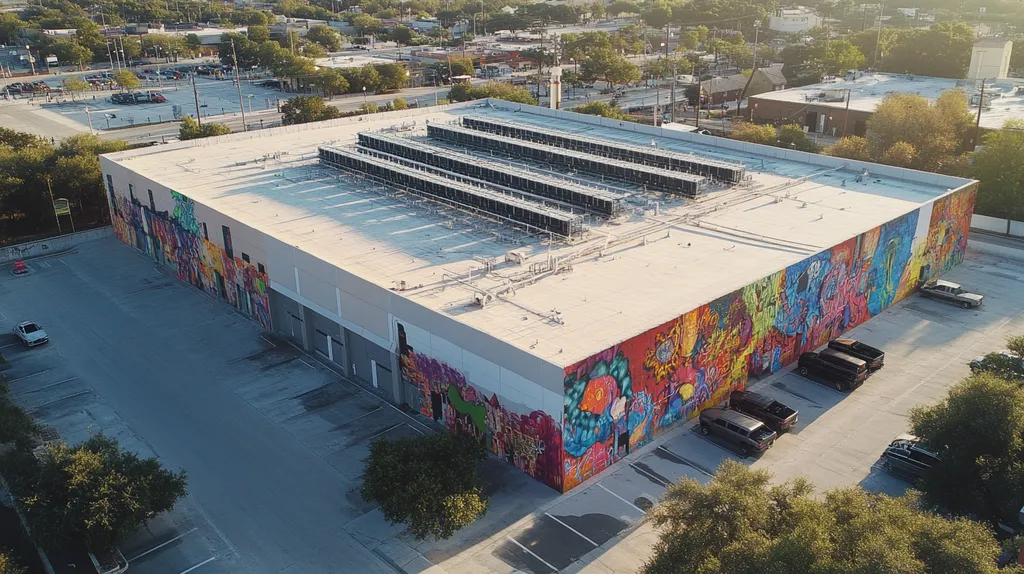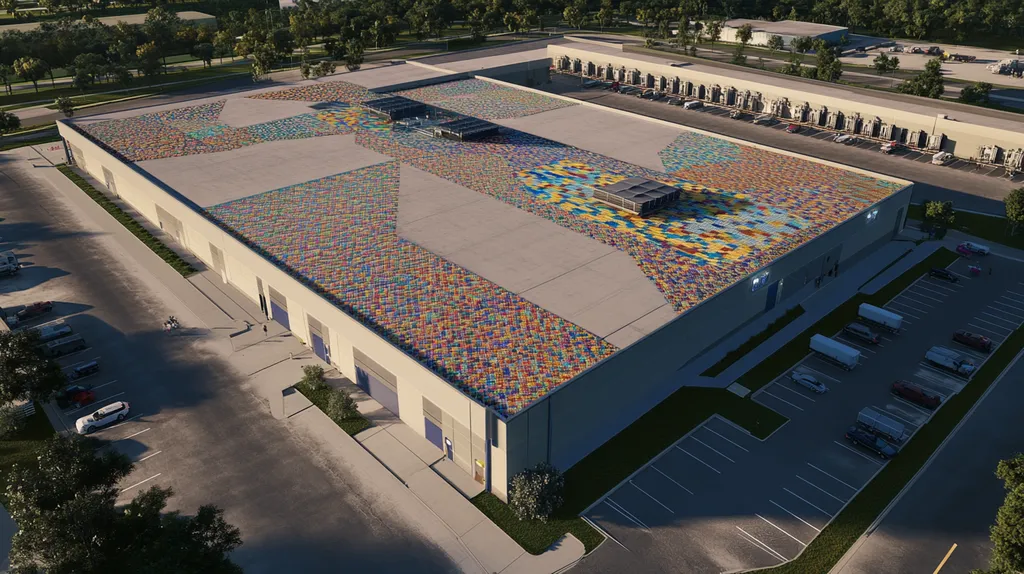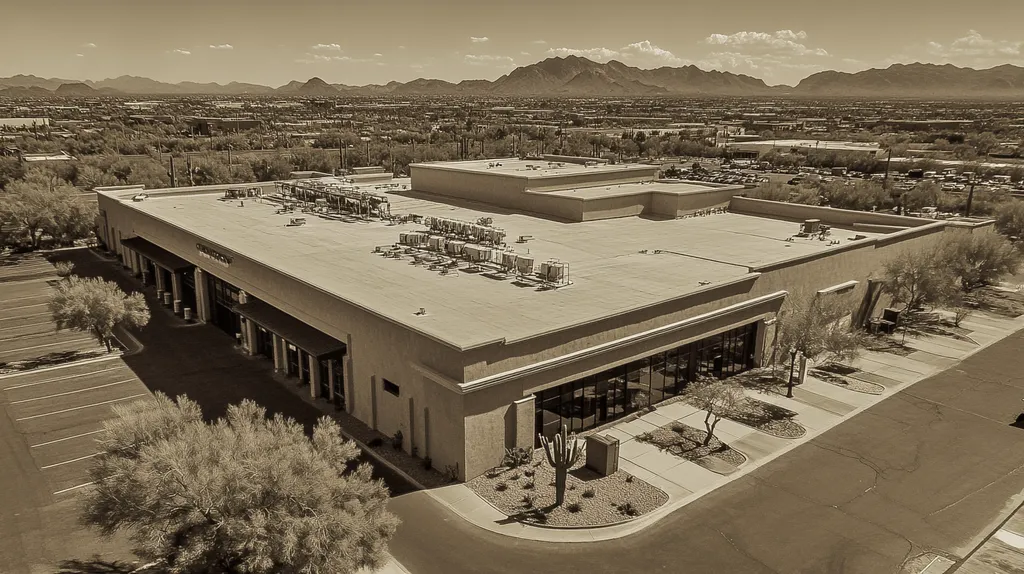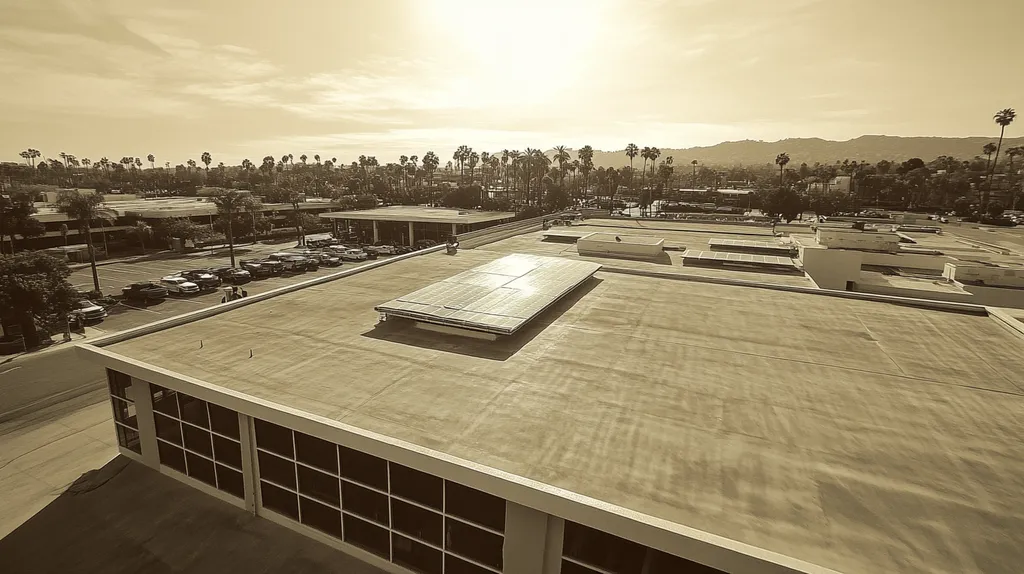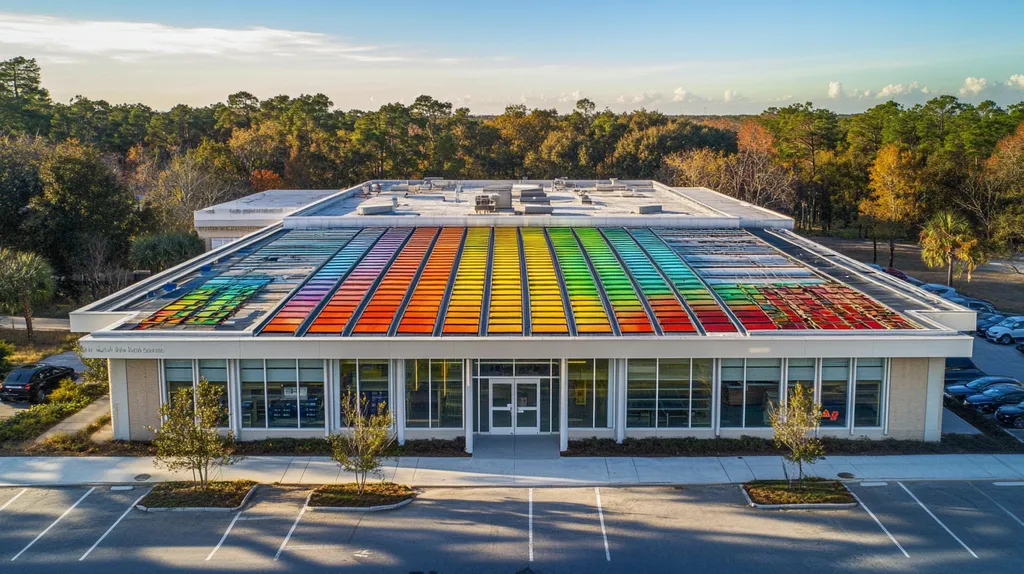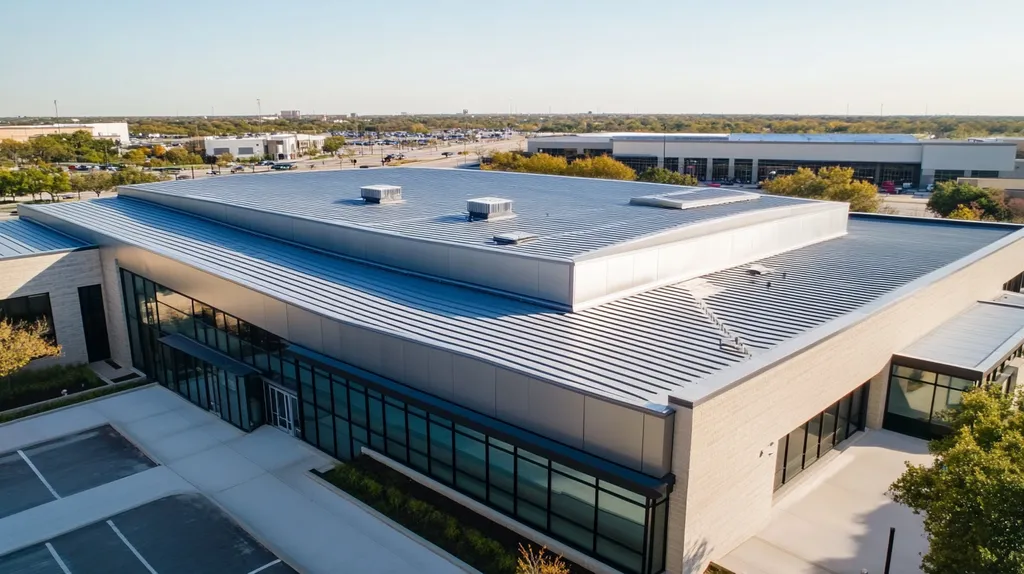In industrial roofing, seemingly minor mistakes during application can spiral into catastrophic failures, with industry data showing that 40% of commercial roof replacements stem from poor installation practices.
From inadequate drainage systems to subpar material choices, these preventable errors cost facility owners millions annually in premature replacements and emergency repairs.
By examining common pitfalls across performance, financial, compliance, and operational domains, facility managers can implement proven solutions that extend roof lifespans while protecting their substantial roofing investments.
SECTION 1: PERFORMANCE FACTORS
Overlooking critical performance factors during industrial roof applications can lead to hefty financial burdens and jeopardize safety. Remarkably, approximately 30% of commercial roof failures stem from improper installation and maintenance. To safeguard their investments and promote the longevity of their roofs, facility managers must focus on regular inspections, high-quality materials, and expert installation practices.
Neglecting Regular Roof Inspections
Regular roof inspections play a pivotal role in spotting potential issues before they spiral out of control. In the absence of consistent evaluations, minor concerns can escalate into serious leaks or structural damage over time. Experts note that timely inspections can prolong a roof’s lifespan by as much as 50%.
Conducting these inspections allows for the timely replacement of worn-out components, thus averting expensive emergency repairs. Facility managers who overlook inspections risk unexpected downtime, which can disrupt operations significantly.
The frequency of inspections should reflect local climate conditions, as facilities situated in harsher environments may need more frequent evaluations due to intensified wear and tear. Adapting inspection schedules accordingly is crucial for effective roof management.
Key Action Items
Using Low-Quality Materials
The selection of roofing materials significantly influences a roof’s durability and performance. Choosing low-quality materials can lead to premature aging and failure, while upgrading to better options often enhances energy efficiency and mitigates long-term costs.
Investing in high-quality materials yields immediate advantages, such as lowered energy bills from efficient roofing options. Facility managers need to weigh initial costs against the substantial savings that quality materials can provide over time.
It’s also crucial that the chosen materials match the specific environmental conditions. Materials unsuitable for extreme weather may suffer rapid degradation. Understanding the local climate dynamics and selecting appropriate materials is vital for a successful installation.
Key Action Items
Poor Installation Practices
Poor installation practices rank among the top causes of industrial roof failures. Failing to follow manufacturer specifications can void warranties and result in severe leaks or even structural collapse. Alarmingly, improper installation accounts for about 40% of roofing failures in the industry.
Ensuring that roofing contractors receive proper training and certification is essential to minimize these risks. Facility managers must verify that installation teams are skilled and well-versed in best practices to avoid costly errors and the need for repairs.
Each roofing material, whether EPDM, TPO, or metal, has unique installation requirements. Disregarding these specifics jeopardizes the roof’s integrity. Skilled installation is not just preferred; it is vital for long-term success and return on investment.
Key Action Items
SECTION 2: FINANCIAL CONSIDERATIONS
The financial impact of industrial roofing cannot be overstated. Poor management of roofing budgets can lead to substantial hidden costs that may surface unexpectedly. Early roof replacements and the financial strain from unaddressed repairs can severely affect a facility’s overall profitability. By paying close attention to these financial considerations, facility managers can make informed decisions, ultimately protecting their revenues.
Cost of Premature Replacement
Premature roof replacement is a significant financial pitfall that can weigh heavily on facility budgets. Neglecting routine maintenance reduces a roof’s lifespan, where a structure designed for 20 years may fail in just a decade when ignored. This results in not only the cost of new materials but also the expense of lost productivity during installation.
Moreover, warranties and maintenance agreements tied to new roofs often lose their value if replacements are carried out too early. Investing in regular maintenance can extend a roof’s life and save thousands in replacements, highlighting the importance of timely interventions over unnecessary upgrades.
Facility managers who actively manage roof life cycles often enjoy a return on their investments by postponing replacements while ensuring prudent spending. Understanding the lifespan of roofing materials is essential for effective budgeting and planning.
Key Action Items
Expenses from Unaddressed Repairs
Ignoring minor repairs can lead to skyrocketing costs that greatly exceed initial estimates. What starts as a small leak can escalate into serious issues, damaging insulation or critical machinery. The financial repercussions are tangible, contributing not only to increased repair bills but also disrupting regular operations with unexpected downtime.
The longer repairs are delayed, the higher the risk of structural failures that can very well compromise safety. For facility managers, understanding these financial risks is essential, as business interruptions can compound repair costs and profitability losses.
Regular inspections can act as an early warning system, catching issues before they escalate. By establishing a routine repair schedule, operational longevity is enhanced, and financial risk is diminished. Effective communication with roofing professionals facilitates timely responses to necessary repairs.
Key Action Items
Energy Efficiency and Operational Costs
Energy efficiency is a vital financial component of industrial roofing that can greatly reduce overall operational costs. A well-insulated, properly sealed roof significantly lowers a facility’s energy consumption. For instance, reflective roofing materials can cut cooling expenses by up to 20% during peak seasons.
Conversely, inadequately designed roofs that allow for air leaks place additional strain on heating and cooling systems, leading to inflated utility bills. Over time, these increased operational expenses can place a significant financial burden on facility owners.
Investing in energy-efficient roofing solutions not only minimizes costs but also bolsters the facility’s sustainability credentials. Facility managers should consider applicable energy rebates and incentives that accompany energy-efficient upgrades. Regular roof audits can identify areas for optimization, making energy consumption and roofing performance easier to manage financially.
Key Action Items
SECTION 3: COMPLIANCE REQUIREMENTS
Compliance with building codes and industry standards is not just a formality; it’s a vital element in preventing costly roof failures. Many facility managers underestimate how crucial regulations are to roofing projects. Failure to comply can not only result in significant fines but also create unsafe working environments. Understanding and adhering to compliance requirements can save time, money, and future headaches, ensuring a smoother roofing experience.
Adhering to Building Codes
Building codes are the backbone of safety and structural integrity in roofing applications. Local codes specify the required materials, designs, and structural capabilities unique to each region. Non-compliance can lead to disastrous failures, costly repairs, and even injuries, making it imperative to adhere to these regulations.
Facility managers should proactively consult local building authorities before initiating a project. This step ensures a comprehensive understanding of applicable requirements and helps avoid potential pitfalls. Additionally, hiring qualified contractors familiar with local codes can mitigate compliance risks significantly.
Routine inspections during installation are essential to ensure that roofs remain compliant as codes evolve. Failure to keep up with changing standards can lead to delays and increased costs, all of which affect overall facility operations. Staying updated on regulatory changes is key to maintaining compliance.
Key Action Items
Meeting Industry Standards
Industry standards set critical benchmarks for quality and performance in roofing materials and practices. Organizations like the American Society for Testing and Materials (ASTM) create guidelines that help ensure roofing durability and reliability. Ignoring these standards undermines roofing performance and can lead to long-term issues.
Facility managers should prioritize roofing materials that meet or exceed industry standards. This means carefully evaluating insulation, membranes, and coatings for compliance. Working with manufacturers that provide compliance assurances reduces risks and liabilities.
Moreover, having trained personnel knowledgeable about these standards enhances installation quality. Investing in training ensures that team members are aligned with industry expectations, leading to better outcomes on roofing projects.
Key Action Items
Regulatory Compliance for Roofing Materials
The selection of roofing materials is governed by various regulatory requirements, which focus on safety, environmental impact, and longevity. Facility managers must ensure that chosen materials comply with both government and industry regulations to avoid future complications.
For instance, some roofing products may contain harmful substances that violate environmental regulations. Using compliant materials not only helps avoid fines but also encourages responsible construction practices.
Understanding the lifecycle of roofing materials is essential for compliance. Reviewing environmental certifications ensures that materials meet safety standards while supporting sustainability initiatives.
Key Action Items
SECTION 4: RISK MANAGEMENT
Risk management is an essential aspect of industrial roofing that cannot be ignored. Neglecting this crucial area can lead to costly repairs and significant operational disruptions. Alarmingly, almost 30% of commercial roofing failures are tied to water ponding. By effectively addressing ponding water, preventing structural damage, and mitigating weather-related risks, facility managers play a pivotal role in maintaining roof integrity.
Identifying and Addressing Ponding Water
Ponding water is an unwanted accumulation that occurs when drainage fails, threatening the longevity of roofing materials and the structure beneath. Understanding the causes—such as inadequate drainage systems or design flaws—can empower facility managers to prevent this issue at its core.
Regular inspections are critical for spotting areas prone to water collection. By implementing enhanced drainage solutions like scuppers or gutters, managers can effectively reduce this risk. Furthermore, maintaining clean roof surfaces free of debris promotes swift drainage, lessening the potential for water damage.
Prolonged exposure to stagnant water can lead to dangerous mold growth and significantly undermine structural integrity. Therefore, proactive maintenance and prompt repairs are not just helpful—they are essential for preserving both the safety and longevity of the roof.
Key Action Items
Preventing Structural Damage
Structural damage is a critical threat that looms over industrial roofs, often caused by heavy snow, ice accumulation, or excessive foot traffic. Understanding the load limits and environmental factors at play is essential for safeguarding the roof’s integrity.
Facilities equipped with heavy machinery such as HVAC systems must ensure adequate support to mitigate the risk of stress on roof structures. Regular load assessments can help identify weight distribution issues, and reinforcing critical areas offers added security against environmental pressures.
Furthermore, sealing all perimeters and transitions is essential. Poorly installed flashings or seams can lead to water infiltration, resulting in severe structural failures. Educating maintenance teams on recognizing early signs of distress can bolster efforts to sustain the roof’s longevity.
Key Action Items
Mitigating Weather-Related Risks
Weather-related risks present significant hazards for industrial roofs, from extreme temperatures to heavy rainfall. Preparing for these elements is vital to preventing roofing failures. Training staff to recognize vulnerabilities is a proactive step every facility can take.
Scheduled roof inspections before and after severe weather can uncover hidden damage. Swift repairs or reinforcements are essential to mitigating issues before they escalate. Keeping records of the roof’s condition post-storm provides valuable insights for improving future resilience.
Choosing high-performance roofing materials designed to withstand extreme conditions is another way to minimize risk. For example, reflective coatings can help prevent heat damage, while reinforced membranes can stand up to strong winds. Facility managers should actively consider these innovations in material selection.
Key Action Items
SECTION 5: OPERATIONAL PROCEDURES
Operational procedures hold the key to safeguarding the performance and longevity of industrial roofing systems. Neglecting proper drainage can invite water pooling, risking severe structural damage and escalating repair costs. Additionally, failing to clear debris transforms small problems into major setbacks. Facility managers must implement rigorous procedures focused on drainage, debris management, and seasonal inspections. These essential measures protect investments and reinforce safety.
Maintaining Proper Drainage Systems
Effective drainage is crucial for the integrity of any industrial roofing system. When water accumulates, it can result in leaks, mold growth, and extensive damage if not promptly managed. Facility managers should verify that drainage systems are thoughtfully designed and installed to channel water away efficiently.
Regular inspections of drains, scuppers, and gutters are vital to ensure they are functioning properly. Clogged drainage systems lead to dangerous water buildup, compromising roof integrity and creating safety hazards. Techniques like infrared thermography can detect hidden moisture not visible to the eye.
Establishing a routine maintenance schedule enables facility managers to address drainage issues before they escalate into costly repairs. A proactive approach not only enhances the roof’s lifespan but improves the facility’s overall efficiency by reducing flood risks during storms.
Key Action Items
Inspecting and Clearing Debris
Debris accumulation—such as leaves, branches, and dirt—can obstruct drainage systems, leading to serious roof problems. Regular inspections that focus on debris clearance are essential for maintaining unimpeded water flow. Facility managers must prioritize keeping roofs clean to avoid costly complications.
When debris traps moisture against roofing materials, it accelerates wear and increases leak risk, especially on flat roofs. A clear schedule for debris removal is vital for the ongoing health of the roof.
Conducting inspections following severe weather ensures that any debris resulting from storms is addressed quickly. Documenting observed damage allows for prioritized repairs, preventing larger issues from developing.
Key Action Items
Scheduling Seasonal Inspections
Seasonal inspections are a fundamental practice for maintaining industrial roofs. Each season introduces unique challenges, requiring thorough examinations to address specific weather-related stresses on roofing systems.
For example, winter may exacerbate snow load issues or lead to ice dam formation, while summer can bring risks of UV degradation. Scheduling inspections at the start of each season allows facility managers to mitigate these issues and preserve the roof’s integrity.
During these inspections, both the roof surface and drainage systems should be assessed for debris and damage. Inspections in the fall can tackle winter-related concerns, while spring evaluations can address damage caused by winter storms.
Key Action Items
SECTION 5: OPERATIONAL PROCEDURES
Operational procedures are essential for ensuring the longevity and effectiveness of industrial roofing systems. Neglecting proper drainage can lead to dangerous water pooling, resulting in significant structural damage and inflated repair costs. Additionally, failing to clear debris can transform minor concerns into major setbacks. Facility managers must prioritize strong procedures centered on drainage, debris management, and seasonal inspections to safeguard their investments and maintain safety.
Maintaining Proper Drainage Systems
Effective drainage is foundational for any industrial roofing system. Water accumulation can lead to leaks, mold growth, and extensive damage if it goes unaddressed. Facility managers must ensure that drainage systems are thoughtfully designed and installed to direct water away efficiently from the roof.
Regular inspections of drains, scuppers, and gutters are crucial for verifying their functionality. Clogged drainage systems can result in hazardous water buildup, compromising roof integrity and posing safety risks. Utilizing tools such as infrared thermography can help identify hidden moisture that is not visible to the naked eye.
Establishing a proactive maintenance schedule can help address drainage concerns before they escalate into costly repairs. A well-implemented drainage strategy not only extends the roof’s lifespan but also significantly improves building efficiency by minimizing flooding risks during storms.
Key Action Items
Inspecting and Clearing Debris
Accumulated debris, such as leaves, branches, and dirt, can obstruct drainage systems and lead to serious roof problems. Regular inspections focused on clearing debris are vital for maintaining unobstructed water flow. Facility managers must prioritize roof cleanliness to avoid costly and preventable complications.
Debris can trap moisture against roofing materials, accelerating wear and heightening the likelihood of leaks. This concern is particularly critical for flat roofs, which are more vulnerable to water pooling. Establishing a consistent schedule for debris removal is essential for ongoing roof health.
Implementing inspections after severe weather ensures that any debris accumulation from storms is addressed swiftly. Documenting observed damage aids in prioritizing repairs and prevents larger concerns from developing.
Key Action Items
Scheduling Seasonal Inspections
Seasonal inspections are a key strategy for maintaining industrial roofs. Different weather conditions can impose unique stresses on roofing systems, necessitating thorough examinations to address specific seasonal challenges.
For example, winter months can intensify issues related to snow load or the formation of ice dams, whereas summer may pose risks of UV degradation. Scheduling inspections at the start of each season proactively addresses these challenges, preserving the roof’s integrity.
During these inspections, both the roof surface and drainage systems should be assessed for debris and damage. Fall inspections can tackle winter-related concerns, while spring evaluations address damage caused by winter storms.
Key Action Items
Looking Ahead
The evolution of industrial roofing from basic tar-and-gravel systems to today’s high-performance synthetic membranes represents both progress and heightened responsibility for facility managers.
Industry data reveals that 40% of commercial roof failures stem from preventable installation and maintenance errors, translating to billions in unnecessary repairs annually.
The solutions outlined in this guide – from rigorous inspection protocols to material selection standards – provide a proven framework for avoiding these costly mistakes.
As roofing technologies continue advancing, success depends on maintaining disciplined operational procedures while embracing innovative materials and methods that enhance performance.
The stakes are clear: proper application and maintenance protect not just the roof, but the entire facility’s operational integrity and financial health.
FREQUENTLY ASKED QUESTIONS
Q. What are the performance factors for a commercial roof application?
A. Performance factors include regular inspections, quality materials, and skilled installation practices. Neglecting these can lead to costly repairs and safety hazards, as poor installation alone accounts for a significant portion of roof failures.
Q. How can facilities manage financial considerations for an industrial roof?
A. Managers can prioritize regular maintenance to extend roof life and minimize costs associated with premature replacements and unaddressed repairs. Tracking financial data and budgeting for maintenance allows for better planning and resource allocation.
Q. What compliance requirements must be followed for industrial roofing?
A. Compliance with building codes and industry standards is crucial for safety and performance. Facility managers must stay informed on local regulations and consult authorities to avoid penalties and ensure proper installation practices.
Q. How can risks be managed during industrial roof projects?
A. Identify potential risks such as ponding water, structural damage, and weather-related hazards. Regular inspections and proper drainage solutions can help mitigate these risks, while training staff to recognize early signs of distress is essential to ensure safety.
Q. What operational procedures are vital for maintaining an industrial roof?
A. Implement strong drainage systems, conduct regular debris clearance, and schedule seasonal inspections. These procedures not only protect structural integrity but also prevent costly repairs by addressing minor issues before they escalate.
Q. How does energy efficiency impact operational costs for commercial roofs?
A. Energy-efficient roofing materials lower energy consumption, reducing overall operational costs. Well-insulated roofs prevent air leaks, while reflective roofing can decrease cooling expenses. Regular energy audits help identify potential savings and improve financial performance.
Q. What should facility managers do to choose roofing materials?
A. Facility managers should prioritize materials that are durable, compliant with regulations, and suitable for local climate. Researching suppliers, analyzing warranties, and considering lifecycle costs can significantly affect long-term performance and cost-effectiveness.

